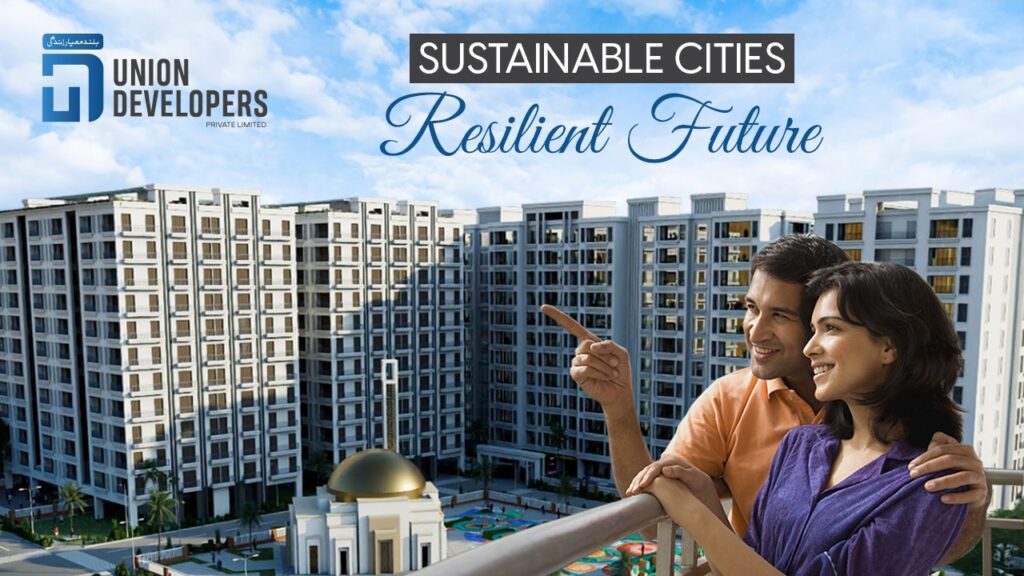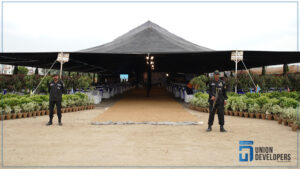In a world where the concept of future cities often conjures up sci-fi imagery and technological dominance, the real challenge lies in creating smart, sustainable environments for sustainable cities. Amidst the complexities of the 21st century, it becomes increasingly vital to prioritize the development of cities that are humane, nurturing, and environmentally friendly. This shift towards sustainability and resilience brings forth a renewed focus on people, emphasizing the importance of fostering connections and safeguarding the planet.
By embracing concepts such as naturalness, organics, and eco-friendliness, we can optimize resource usage, minimize energy loss, and pave the way for a sustainable future. The key lies in integrating technological advancements while prioritizing the well-being of residents, incorporating renewable energy sources, green spaces, and eco-conscious infrastructure to create vibrant, resilient cities. The future of cities hinges on our collective dedication to innovative solutions that harmonize progress with environmental preservation.
With the green horizon beckoning, we have the opportunity to shape a future where sustainability and resilience thrive, forging a path toward a greener, more prosperous world.
Sustainable Cities Model
Troubles abound for nations, regardless of their wealth or size. Smaller nations grapple with challenges like weak governance, declining populations, and struggling economies. Meanwhile, their wealthier counterparts face a different set of issues, including traffic congestion, intense global competition, and aging infrastructure. However, there is a solution on the horizon—a holistic approach to urban development that harnesses the power of integrated environmental technologies.
By embracing this approach, nations can tackle their urban challenges head-on and forge a path toward a brighter tomorrow. The model of sustainable cities is a transformative journey that promises to unlock new possibilities, offering a glimmer of hope for a more prosperous and sustainable future.
Building a Sustainable Future City: 10 Key Considerations
- Ecology
- Water conservation, supply, and drainage
- Waste management
- Energy efficiency, supply, and distribution
- Agriculture
- Mobility
- Preservation of culture and historic heritage
- Livability
- Advanced and green infrastructure
- Sustainable policies
- Features of Sustainability & Resilience
Several sustainable and resilient ways that can help shape the future of cities are following:
Green Infrastructure & Cultivating a Sustainable Urban Landscape
With deliberate intent, intertwine the interconnected threads of natural and semi-natural spaces within the urban realm, forming a magnificent tapestry of sustainability. Through thoughtful management of these areas in unison, a diverse array of priceless services is bestowed upon the ecosystem. Behold the awe-inspiring sustainable cities with green buildings rising as beacons of environmental consciousness, while lush roofs reach towards the sky, embracing the celestial expanse.
The symphony of ecological planning orchestrates a harmonious coexistence between humanity and nature, while urban farms flourish, nurturing a sustainable abundance. These remarkable facets exemplify the vast array of benefits that blossom with the presence of green infrastructure. Not only does it elevate living conditions and enrich the quality of life, but it also serves as a catalyst for a thriving green economy, where prosperity blossoms in harmony with ecological well-being.
Carbon Neutrality: Paving the Way for a Greener World
Innovatively replacing concrete and steel, the building blocks of progress, with eco-friendly alternatives such as bamboo, adobe, straw bales, and cross-laminated timber unveils a world of sustainable possibilities. This mindful transition not only curbs waste but also offsets the carbon footprint, breathing life into a greener future. By harnessing these low-carbon materials, we redefine the very essence of construction, forging a path towards environmental harmony and responsible development.
Adapting for Challenges: Building Resilient Infrastructure
Craft the design in a manner that empowers it to withstand the full spectrum of natural and human-induced disasters, including earthquakes and floods. A smart and adaptive infrastructure possesses the remarkable ability to endure the aftershocks and pressures that arise. By incorporating resilience into every facet of its blueprint, we pave the way for a sustainable future where our cities not only survive but thrive amidst adversity. It is through this visionary approach that we fortify our foundations and forge a path towards a safer, more secure future cities.
Social Neighborhoods: Fostering Sustainable Cities
This is also referred to as the densification and compacting of a sustainable city. The aim of social neighborhoods is to cut down on the costs of transportation and infrastructure. Examples include mixed building designs, working spaces, shared spaces, etc.
Embracing Nature in Urban Spaces
Facilitating the proliferation of natural ecosystems within urban areas, while simultaneously improving the local air quality and promoting biodiversity, in order to foster sustainable cohabitation within cities. Advocating for the implementation of urban farms, gardens, and measures to preserve biodiversity as viable solutions to counteract the detrimental effects of habitat destruction in rapidly expanding urban environments.
Energy-Conscious Construction: Prioritizing Sustainability in City Planning
In order to align with energy conservation standards, building designs should prioritize the utilization of natural light and airflow over-reliance on air conditioning units and artificial lighting. This intentional focus not only contributes to decreased energy consumption but also facilitates the establishment of a corporate environment that is environmentally good for sustainable cities.
Waste Management: A Sustainable Approach to Building Design
Promoting a culture of reducing, reusing, and recycling, alongside raising awareness among residents, is paramount. By integrating infrastructure that promotes responsible consumption, waste generation can be minimized. Incorporating absorbent rain gardens for rainwater cleansing, permeable streets to enhance groundwater levels, and rainwater collection pools for reuse, we can take significant strides towards sustainable resource management.
Biomorphic Urbanism
Biomorphic urbanism entails the creation of cities that harmoniously coexist with nature. Achieving an efficient biophilic design requires the seamless integration of natural and man-made elements into architecture and urban planning. In this approach, the anthropogenic system must complement and coexist harmoniously with ecological systems, fostering a symbiotic relationship within sustainable cities. Furthermore, the city’s architecture, planning, and form should embody the distinctiveness of its cultures and ecologies, thereby reflecting the unique identity of the urban environment.
Take Points
A sustainable and enduring vision for the future, aimed at benefiting generations to come, necessitates the incorporation of all feasible sustainable attributes. While the passage of time may influence the choices we make for sustainable cities; there is one aspect that will remain timeless, the integration of intelligent design and construction. By leveraging sustainability and resilience, our future cities hold a captivating allure.








